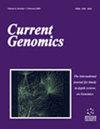Preface
IF 1.4
4区 生物学
Q4 BIOCHEMISTRY & MOLECULAR BIOLOGY
引用次数: 0
Abstract
This book is about automotive user interfaces. In the last years the importance of user interfaces for in-vehicle usage has increased strongly. Different studies show that over 80% of today’s innovations in the automotive industry are based on car electronics and its software. These innovations can be categorized into hidden technologies (e.g., ASP, ESP), comfort functions (e.g., navigation, communication, entertainment) or driver assistance (e.g., distance checking). Especially the last two categories have to be configurable by the driver and therefore require a certain amount of driver interaction. This results in a need for a modern and consistent automotive user interface which on the one hand allows the configuration of these systems and on the other hand conforms to the specialized requirements of the automotive industry. Some of these requirements are: the interaction devices have to be integrated into a limited space; the automotive user interface has to be intuitively usable and adaptable, since drivers generally do not get an extensive explanation and the automotive user interface has to be very easy to use and should distract the driver as little as possible from his main task of driving. The increased complexity of automotive user interfaces, the importance of using consumer electronic devices like smartphones in the car as well as autonomous driving has induced a lot of research at universities and industrial companies. The specific chapters in this book cover a relatively broad spectrum of detailed research topics in the area of automotive user interfaces concerning, e.g. usability and user experience, interaction techniques and technologies, applications, etc. This book provides an outstanding overview as well as deep insights into the area of automotive user interfaces, which is an important topic in the field of human– computer interaction. Besides aiming to be a reference in its area, this book is intended as a very significant and valuable source for professional practitioners, researchers as well as senior and postgraduate computer science and engineering students.前言
这本书是关于汽车用户界面的。在过去的几年里,用户界面对车内使用的重要性已经大大增加。不同的研究表明,当今汽车行业80%以上的创新都是基于汽车电子设备及其软件。这些创新可分为隐藏技术(如ASP、ESP)、舒适功能(如导航、通信、娱乐)或驾驶辅助(如距离检测)。特别是最后两个类别必须由驱动程序配置,因此需要一定数量的驱动程序交互。这导致需要一个现代和一致的汽车用户界面,一方面允许这些系统的配置,另一方面符合汽车工业的专业要求。其中一些要求是:交互设备必须集成到有限的空间中;汽车用户界面必须具有直观的可用性和适应性,因为驾驶员通常不会得到广泛的解释,并且汽车用户界面必须非常易于使用,并且应该尽可能少地分散驾驶员的主要驾驶任务。汽车用户界面日益复杂,在汽车中使用智能手机等消费电子设备以及自动驾驶的重要性,引发了大学和工业公司的大量研究。本书的具体章节涵盖了相对广泛的汽车用户界面领域的详细研究主题,例如可用性和用户体验,交互技术和技术,应用程序等。这本书提供了一个杰出的概述,以及深入了解汽车用户界面的领域,这是人机交互领域的一个重要课题。除了旨在成为该领域的参考,这本书的目的是作为一个非常重要的和有价值的来源,为专业从业者,研究人员以及高级和研究生计算机科学和工程专业的学生。
本文章由计算机程序翻译,如有差异,请以英文原文为准。
求助全文
约1分钟内获得全文
求助全文
来源期刊

Current Genomics
生物-生化与分子生物学
CiteScore
5.20
自引率
0.00%
发文量
29
审稿时长
>0 weeks
期刊介绍:
Current Genomics is a peer-reviewed journal that provides essential reading about the latest and most important developments in genome science and related fields of research. Systems biology, systems modeling, machine learning, network inference, bioinformatics, computational biology, epigenetics, single cell genomics, extracellular vesicles, quantitative biology, and synthetic biology for the study of evolution, development, maintenance, aging and that of human health, human diseases, clinical genomics and precision medicine are topics of particular interest. The journal covers plant genomics. The journal will not consider articles dealing with breeding and livestock.
Current Genomics publishes three types of articles including:
i) Research papers from internationally-recognized experts reporting on new and original data generated at the genome scale level. Position papers dealing with new or challenging methodological approaches, whether experimental or mathematical, are greatly welcome in this section.
ii) Authoritative and comprehensive full-length or mini reviews from widely recognized experts, covering the latest developments in genome science and related fields of research such as systems biology, statistics and machine learning, quantitative biology, and precision medicine. Proposals for mini-hot topics (2-3 review papers) and full hot topics (6-8 review papers) guest edited by internationally-recognized experts are welcome in this section. Hot topic proposals should not contain original data and they should contain articles originating from at least 2 different countries.
iii) Opinion papers from internationally recognized experts addressing contemporary questions and issues in the field of genome science and systems biology and basic and clinical research practices.
 求助内容:
求助内容: 应助结果提醒方式:
应助结果提醒方式:


